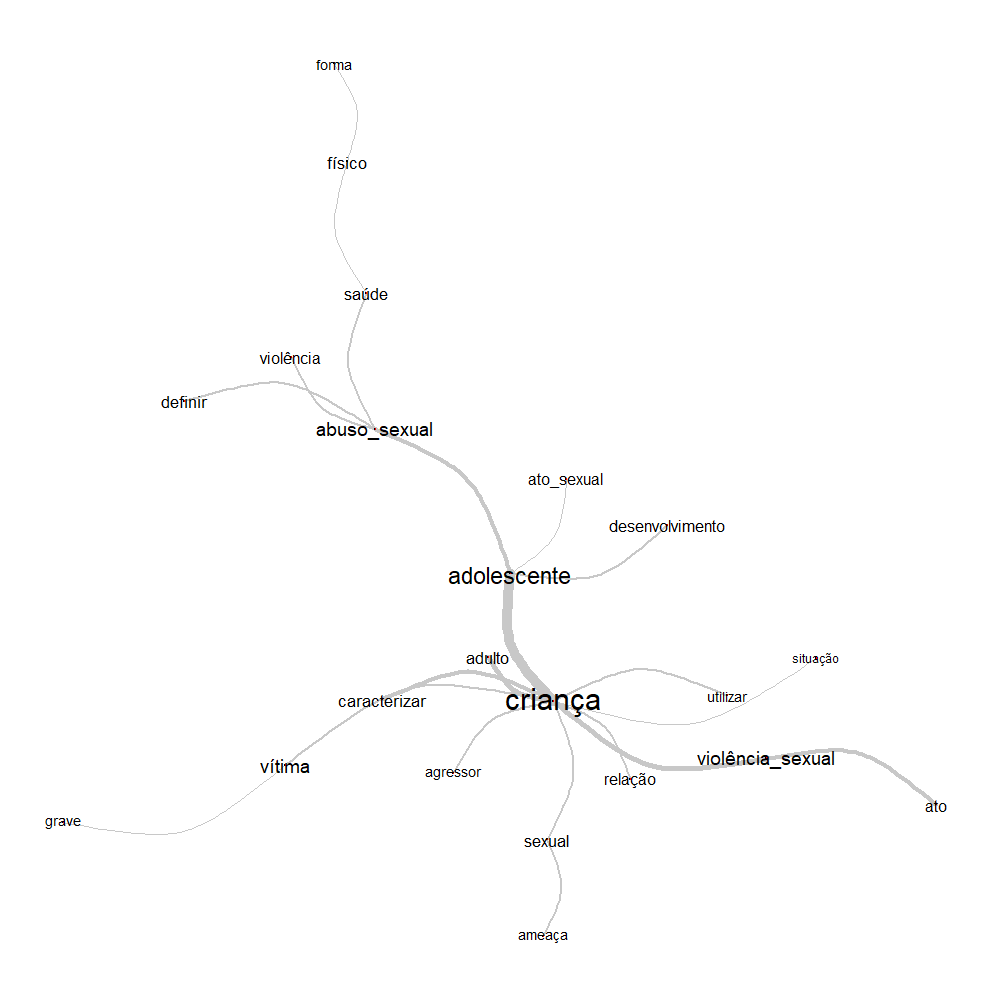Investigating The Link Between Algorithmic Radicalization And Mass Violence

Table of Contents
The Role of Algorithms in Amplifying Extremist Content
Algorithms, designed to maximize user engagement, often inadvertently amplify extremist content, creating a dangerous feedback loop. This amplification happens through two primary mechanisms: filter bubbles and echo chambers, and sophisticated recommendation systems.
Filter Bubbles and Echo Chambers
Algorithmic personalization, while intended to provide relevant content, can inadvertently create filter bubbles and echo chambers. These online spaces limit exposure to diverse perspectives, reinforcing pre-existing beliefs, and making users more susceptible to extremist views.
- Examples: Facebook's News Feed algorithm, YouTube's recommendation system, and Twitter's trending topics all contribute to the creation of echo chambers.
- Psychological Mechanisms: Confirmation bias, where individuals seek out information confirming their beliefs, and cognitive dissonance, the discomfort of holding conflicting beliefs, both contribute to the entrenchment of extremist viewpoints within these echo chambers. This makes individuals more vulnerable to manipulation and radicalization.
Recommendation Systems and Content Personalization
Recommendation systems, designed to keep users engaged, often prioritize sensational or emotionally charged content. This can lead users down a "rabbit hole" of increasingly extreme material, exposing them to violent or hateful ideologies they might not have otherwise encountered.
- Examples: YouTube's autoplay feature, often leading users from relatively benign content to increasingly extremist videos; Facebook's targeted advertising, which can expose users to extremist groups and propaganda; and personalized news feeds that prioritize content aligning with a user's existing biases.
- Studies: Numerous studies have demonstrated a correlation between exposure to extremist content through algorithmic recommendations and increased radicalization, showing a clear link between the design of these systems and the spread of harmful ideologies.
The Spread of Misinformation and Disinformation
Algorithms play a crucial role in facilitating the rapid spread of misinformation and disinformation, which can fuel distrust and contribute to radicalization. This includes fake news, conspiracy theories, and manipulated media.
Algorithmic Spread of Fake News and Conspiracy Theories
Algorithms designed to prioritize engagement often prioritize sensational or emotionally charged content, regardless of its veracity. This creates an environment where false and misleading information can spread rapidly and widely.
- Examples: The spread of false narratives about mass shootings or political events through social media algorithms; the use of bots and automated accounts to amplify misleading information.
- Role of Bots: Automated accounts, often used by malicious actors, amplify disinformation by spreading it across numerous platforms and engaging in coordinated campaigns to push specific narratives.
The Impact of Deepfakes and Manipulated Media
Advanced technologies like deepfakes, which use artificial intelligence to create realistic but fabricated videos or audio recordings, present a significant challenge. Deepfakes can be used to manipulate public opinion, incite violence, and spread propaganda, making it exceptionally difficult to discern truth from falsehood.
- Examples: Deepfakes portraying political figures making inflammatory statements; manipulated videos used to incite violence against specific groups.
- Detection Challenges: The sophisticated nature of deepfakes makes them difficult to detect, requiring advanced forensic analysis and fact-checking techniques.
The Connection Between Online Radicalization and Offline Violence
The transition from online radicalization to real-world violence is a complex process, but the connection is undeniable. Online communities provide a breeding ground for extremist ideologies, offering a sense of belonging and validation that can embolden individuals to commit acts of violence.
From Online Communities to Real-World Actions
Online platforms serve as recruiting grounds and training spaces for extremist groups, fostering a sense of community and shared identity among members. This online radicalization can then translate into real-world actions, including acts of terrorism and mass violence.
- Case Studies: Numerous mass violence events have been linked to online radicalization, demonstrating a direct correlation between online engagement and offline actions. These studies highlight the need to understand how online spaces contribute to the escalation of violence.
- Sense of Belonging: Online extremist groups provide a sense of belonging and validation, often targeting individuals feeling isolated or marginalized. This can lead to increased commitment to extremist ideologies and a willingness to engage in violent acts.
The Challenges of Monitoring and Regulation
Regulating online content and preventing algorithmic radicalization is a significant challenge. Balancing the need to protect public safety with the right to freedom of speech necessitates careful consideration.
- Legal and Ethical Challenges: Content moderation policies must be carefully designed to avoid censorship while effectively removing harmful content.
- Effectiveness of Regulation: Different approaches to online content regulation have varying degrees of effectiveness, requiring constant adaptation and refinement to counter evolving tactics used by extremist groups.
Conclusion
The evidence overwhelmingly demonstrates a significant link between algorithmic radicalization and mass violence. Algorithms, intended to enhance user experience, often inadvertently amplify extremist content, spread misinformation, and contribute to the creation of echo chambers. Understanding this complex interplay is crucial in mitigating the risks. We must continue researching the dynamics of algorithmic radicalization and develop effective strategies to combat the spread of harmful ideologies online. This requires not only technological solutions but also a multi-faceted approach involving collaboration between policymakers, technology companies, and civil society organizations. Contact your representatives to advocate for policies that address algorithmic bias and the spread of harmful content. Engage in critical thinking and responsible technology use; your actions can help curb the influence of algorithmic radicalization and mass violence.

Featured Posts
-
 Tileoptiko Programma M Savvatoy 19 Aprilioy Oles Oi Ekpompes
May 30, 2025
Tileoptiko Programma M Savvatoy 19 Aprilioy Oles Oi Ekpompes
May 30, 2025 -
 French Open Opponents Face Abuse Insults Whistling And More
May 30, 2025
French Open Opponents Face Abuse Insults Whistling And More
May 30, 2025 -
 Meet Jacob Alon The Next Big Thing In Industry Field
May 30, 2025
Meet Jacob Alon The Next Big Thing In Industry Field
May 30, 2025 -
 Developpement Durable Et Mobilite La Cooperation Franco Vietnamienne
May 30, 2025
Developpement Durable Et Mobilite La Cooperation Franco Vietnamienne
May 30, 2025 -
 Assessing The Potential Of Kg Motors Mibot In The Japanese Ev Market
May 30, 2025
Assessing The Potential Of Kg Motors Mibot In The Japanese Ev Market
May 30, 2025
Latest Posts
-
 Early Start To Fire Season In Canada And Minnesota
May 31, 2025
Early Start To Fire Season In Canada And Minnesota
May 31, 2025 -
 Crews Battle Out Of Control Wildfires In Eastern Manitoba
May 31, 2025
Crews Battle Out Of Control Wildfires In Eastern Manitoba
May 31, 2025 -
 The Tour Of The Alps A Look At Team Victoriouss Chances
May 31, 2025
The Tour Of The Alps A Look At Team Victoriouss Chances
May 31, 2025 -
 Canadian Red Cross Response To Manitoba Wildfires Donate And Volunteer
May 31, 2025
Canadian Red Cross Response To Manitoba Wildfires Donate And Volunteer
May 31, 2025 -
 Analysis Team Victorious At The Tour Of The Alps
May 31, 2025
Analysis Team Victorious At The Tour Of The Alps
May 31, 2025
